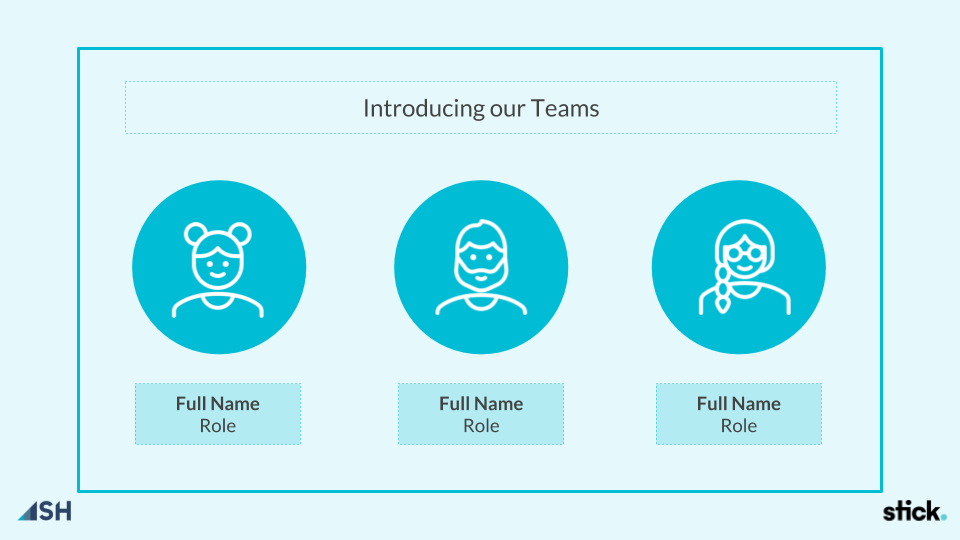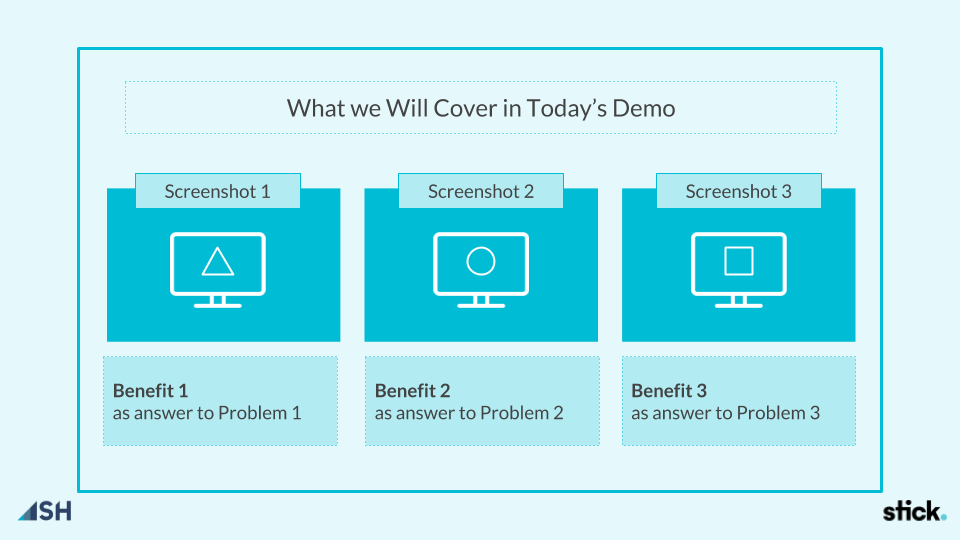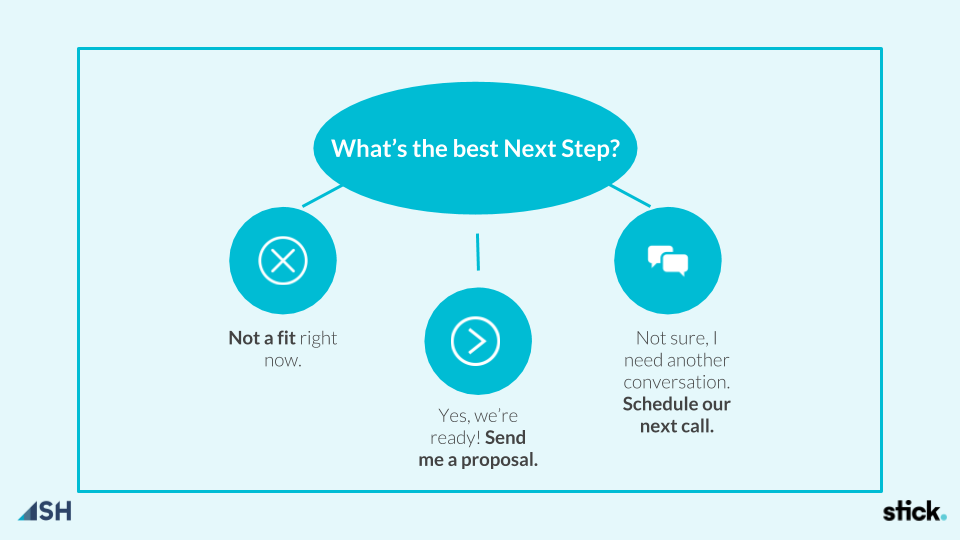After interviewing 200+ sales and marketing pros and analyzing hundreds of sales materials, we wrote the Sales Hacker guide to building a killer Sales Deck. If you can change what a sales rep sees, you can change what they say. Better Sales Decks = Better Sales Demos.
But as a buyer, I still see bad Demo after bad Demo. After about a dozen, I could see that the root cause of the problem was deeper than just decks.
Turns out, the root cause of a bad sales Demo isn’t about what a rep says. It’s about what the rep doesn’t say (or ask). The root cause of bad Demos is bad Discovery.
It sounds obvious now, and it’s something we all know… in theory. But in practice, it seems as if most of us have forgotten that our job as sales professionals isn’t just to pitch. It’s to listen.
If you want a sales Demo that wins, you’ve got to start with Discovery.
This guide is built to help you nail both your Discovery and the Demo, and give you the tactics and visual tools you need to do it.
RELATED: 7 Steps for an Incredible Sales Discovery Call
Demo, Disco-Demo, or Discovery then Demo?
The importance of Discovery isn’t new, but here’s what is: your buyers’ attention is at an all-time premium. Noise is going up, and patience is going down. Personalization is your only viable weapon.
And it pays off. Gartner predicts that B2B companies that use personalization will increase revenues by 15%. What does this mean for Demos? It means you’re not going to win giving your prospect a firehose of product features. Instead, it’s about focusing to find the fit for that prospect.

Demo expert Peter Cohan agrees that the number one cause of bad Demos is poor Discovery, and the data supports his claim: Demos conducted without Discovery are 73% less successful than those with Discovery. Chris Orlob puts it well,
“Demos without Discovery are just guessing.”
But what’s the ideal sequence? Do you separate Discovery and the Demo into two meetings, or just do one Disco-Demo call?
While it depends on your sales process, separating them does help avoid single-threading deals. By splitting the two stages, you’re able to tee up the key end-of-Discovery ask: “For our next call, who else on your team might want to see this?”
Related: 3 Discovery Call Questions that Unlock Amazing Potential
Set your Foundation with Discovery
Start your Discovery call with the end – talking about next steps. Even a simple: “We’d planned on today’s goal being X, but how does that sound to you?” works to make sure you’re aligned. Here, you can take advantage of the persuasion principle of Commitment to get your prospect to agree early, so they are more likely to agree down the line.
Over the course of the conversation, your goal should be 11-14 questions, according to Gong’s research. Starting with Layer 1 questions, get Qualification out of the way first by ticking off each topic on this simple Disco Discussion map:

Then, dive deeper to zone in on their 3-4 key pain points. Once you’ve identified the key areas, ask further questions to quantify the pain, so you can attach a dollar value to it.
To avoid making the prospect feel interrogated, you can layer in Customer Stories as a way to add value while facilitating Self-Discovery. Remember, your offering at this stage is not the product you are selling, but the expertise you bring.
Listen to their problem, and then recount it back to them, using a story about another customer in a similar situation. Your goal in Discovery is to facilitate self-discovery.
Six Steps to a More Successful Sales Demo
Once you have set the foundation with a Discovery call, it’s time for the Demo. Here are the six steps to have more success:
1. Flip your Agenda Upside Down.
First, rethink the structure of how you will communicate with your prospect during the Demo. Many sales reps are conditioned to create suspense in their Demos, going for the big reveal to keep the prospect’s attention (that’s how movies work, right?). But here’s the difference between your Demo and a movie: in a Demo, you don’t have a captive audience – yet. You’re in a race against your buyer’s already-waning attention span.
As a result, even the sentences you speak during a Demo should be structured with the “So What” first, not the other way around:
Good sales rep: “Our product has Feature X, so… you can save time.”
Great sales rep: “You save time, because… Feature X enables it in these ways.”

Starting with the “So What” gives them only enough to stimulate their imagination, and allows them to dive deeper with questions. If you try to go bottoms up and give them too much, you risk confusing them, and if you confuse them, you are guaranteed a ‘no’.
2. Show your face(s).
Now that your mindset is adjusted, it’s time to start your Demo. If you’ve done the post-Discovery transition well, there should be new stakeholders in this meeting. Great! Start off with a simple introduction slide showing everyone’s faces, names, and roles. It takes 2 minutes to grab their names and photos from Linkedin, and nearly guarantees a “Wow, they care!” moment.

This tactic has another secret benefit to it: It creates accountability when you ask to align on Next Steps at the start of the call.
By attaching names to faces in a visual way, you’re capturing the commitment they’ve already made to join the conversation and evaluate your solution. Since people want to be seen as being consistent, this tactic helps increase your chances when it comes to time for the decision.
3. Twist the Knife.
Before you begin addressing how you can help, you need to pick up where you left off in that Discovery Call – with your prospect’s pain point. Remember all of those exceptional Discovery questions you asked to uncover their pain? Here’s the place to really dig into it. Replay the key themes you heard, in their words, about the top three problems.
For example, you could show a simple slide like:

As Doug Landis says, “Your first slide needs to be about what you’ve learned from YOUR CUSTOMERS. Use the voice of your customers to give you credibility.” Nothing builds your credibility – and their commitment – like hearing their own voice up top.
Spend at least one-third of your Demo time aligning everyone – especially newcomers – around the quantitative impact of the problem. Your biggest competition is the status quo, so you have to do the work up front of making sure you’ve correctly highlighted the most severe pain points and quantified them.
For example, we show a slide like this one, customized to our prospect’s specific pain points:

What if you get it wrong and highlight the wrong issues? Great! By making this visual you’re giving them the chance to correct you and redirect the conversation towards the right problems.
4. Show Them The Goal.
You’ve revealed and reminded them of the pain, and now you need to assure them you can make this pain go away. To do this, show them the outcome your product is promising. In Conversations that Win the Complex Sale, Erik Peterson offers this framework to guide how you discuss your product, using Tylenol as an example:

Most people don’t really care whether Tylenol is made of acetaminophen. What they care about is how Tylenol improves your life: what it means and what it does.
If you can nail what your product means, then they’ll be asking what it does. As Rob Falcone explains in JUST F*ING Demo, you want to get the audience to say, “Yes, that is what we want, but now show me how your product makes that possible?”
Set up your prospect to feel like the driver, not the passenger, of your Demo.
5. Match each Pain Point to a Benefit.
Now that they know what your product means, pick no more than three areas to show them what your product does. Each unique job your product does should map precisely to each pain they’ve articulated – in their own words – only minutes before.

By setting the foundation with Discovery, and now Discovery Recap, you’re focusing your Demo and aiming for Fit (not the feature firehose). Sales reps who tie their Demos to specific pain points are 35% more likely to win a deal.

As you discuss your product, don’t forget that the scarcity principle is at work here. Less is more, so give them only enough to share a taste of what it does. The less you say, the more they ask. The more they ask, the more tailored the Demo will be and the more engaged they will become.
This sounds straightforward, yet it is the exact opposite of what most reps do.
6. Eliminate Uncertainty.
You have five minutes left, and they’re asking for more. But don’t keep diving deeper down the product pyramid. You can always make more time for that later. Besides, focusing on it now won’t move the deal forward.
Instead, circle back to the contract you used to start the meeting. It’s time for them to make a decision:

Forcing the decision here during the meeting reduces the number of deals who end up in no man’s land. As Chris Voss puts it, “The sooner you cut off negotiations with someone you shouldn’t be dealing with, it gives you the chance to move on to a more profitable deal.”
Post-Demo Follow-up
No matter how strong your Demo is, your deal won’t go anywhere unless you follow up, especially because there is an average of 6.8 people involved in a B2B buying decision today, up from 5.4 two years earlier.
If you want to make sure your message travels from the buyers you met to those you didn’t, share the customized deck that guided your Demo. That way, your champion is prepared to sell internally on your behalf:

If you don’t, your deal turns into a game of telephone. As Cory Bray and Hilmon Sorey write in Triangle Selling, “Telephone didn’t work in fourth grade, and it doesn’t work in the business world, either.”
While attaching a generic white paper rarely gets results, customized content actually gets opened – and shared. Why? Because it’s about the Customer, not your product.
By listening carefully on Discovery, offering your expertise via Customer Stories, and capturing the insights, you’re guaranteed to deliver value. And you’ve made your champion look good, helping them come prepared to their internal buying decision discussions. Armed with custom content, your champion becomes your best sales rep.
Disco/Demo that Wins
In this sales environment with more noise than ever, your ability to listen is more important than your ability to pitch.
Tightening that Discovery/Demo loop ensures that your sales process can deliver the customized buying experience than any champion expects today. And following up with custom content ensures that that customized message can travel – and close the deal.
Check out the Full SlideShare version, with Templates here:







